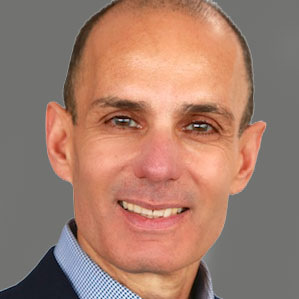Don’t let past failures stifle your future success
It is a well-known fact that most change initiatives outright fail. Most initiatives start with high expectations and hope for a better future, but because of a lack of follow through and staying the course, they end up producing the opposite effect; managers and employees at all levels who are even more skeptical and cynical about any future prospect of change, including their inability to make a difference in shaping a better future.
This is the starting condition of most change initiatives. I see it in most companies.
Take for example the regional senior leadership team of a large global manufacturing company that was operating in a very competitive and commoditized market in which their fixed costs were growing faster than their top line growth.
They had to figure out how to do things differently and work smarter in order to accelerate their revenues while reducing their expenses. This meant a significant transformation in their operating model and mindset about their business.
This company was very successful, and its leadership team members were very seasoned, experienced and smart executives who had been in their jobs for many years. They knew what they had to do. In fact, they had many great ideas about how they could do things differently.
However, because they had seen so many change initiatives come and go without delivering on their promise and hope, it was extremely hard for them to get excited about the new change. They simply couldn’t help but feel extremely skeptical about the likelihood of success.
If you want your change effort to succeed, you have to first free yourself from that notion that if you have failed in the past you are doomed to fail in the future.
You can do that by understanding and taking ownership of why your past change initiatives didn’t work. In most cases, it is because leaders didn’t follow through and stay the course.
You can’t change the past, but you can learn from your past successes, failures, and mistakes. You must be clear about your future aspirations and commitment so that you can be guided by them, and not by past events.
Secondly, you need to manage the mechanical and process aspect of your change. This means, aligning on clear, bold and measurable objectives that define the end-game or what success looks like, breaking them down to mid-course (six-months or annual) milestones and then scheduling a cadence of frequent follow-up meetings to track, inspect and drive your commitment.
You must make this routine the highest priority, keep each follow-up and review meeting religiously, and not delay or cancel these meetings, no matter what.
If you Google “How long does it take to form a new habit or change a habit?” you will get a variety of answers. Most popular seems to be 21 Days.
However, when it comes to forming new practices, rituals and disciplines within a team or organization, it takes much longer.
From my experience as a practitioner – depending of course on the size and complexity of the organization – it takes around a year of staying the course and keeping to your cadence of follow up meetings to integrate your change initiative into your team’s DNA. And, this is considered to be fast.
Last, but not least, you need to drive a mindset of what I call Unconditional Ownership. This means promoting an attitude of “let’s prove that this change will work“, rather than the common default resigned attitude that exists in most teams: “let’s see if the change will work”
The mental attitude is the most important component. In the case of the leadership team described above, they were very good at the discipline of setting goals and metrics, execution and managing process. However, because they carried so much baggage of skepticism and cynicism from the past, it hindered their ability to think outside the box and believe in their power and ability to drive the change they wanted.
You always have a past and a future. The most powerful relationship you could have to them is to be your future and have your past. Or as Mahatma Gandhi put it: “Be the change that you wish to see in the world.”





Leave a Reply
Want to join the discussion?Feel free to contribute!